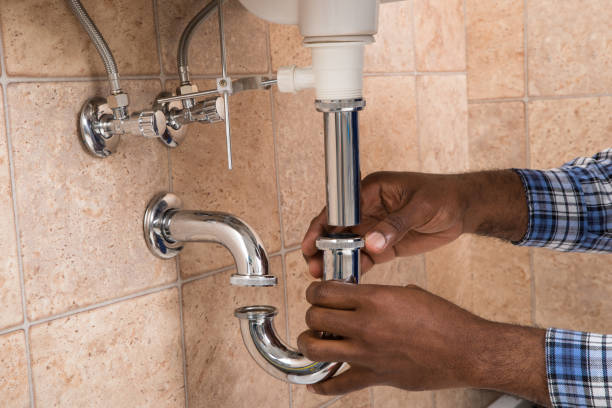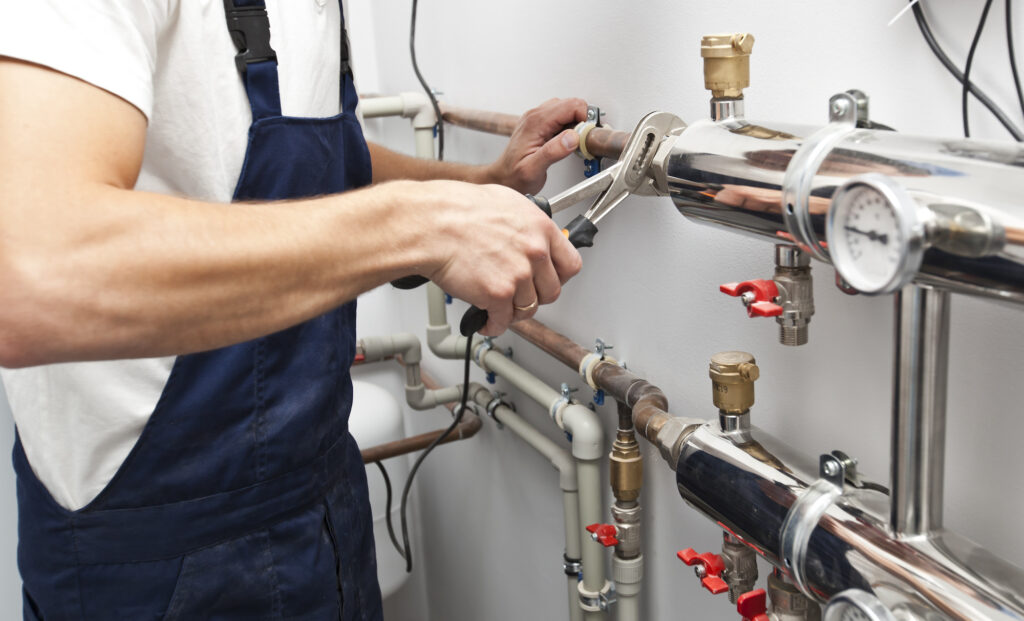Understanding the Basics of Home Plumbing: A Beginner's Tutorial
Understanding the Basics of Home Plumbing: A Beginner's Tutorial
Blog Article
We have discovered the article pertaining to What to Know About Plumbing: Basics, Tips, and Insights listed below on the web and think it made sense to write about it with you over here.

Plumbing is an essential facet of any home, in charge of supplying tidy water for drinking, food preparation, and showering, in addition to getting rid of wastewater securely. Understanding the basics of home plumbing is necessary for each homeowner to ensure appropriate upkeep, troubleshooting, and, if essential, fixings. In this novice's guide, we'll cover the basic concepts of home plumbing to assist you end up being much more accustomed to exactly how it functions.
Water Furnace
The water heater is responsible for home heating water for residential use, consisting of bathing, food preparation, and cleaning. Common kinds of water heaters consist of tank-type water heaters, tankless (on-demand) hot water heater, and heat pump water heaters. The hot water heater is connected to the water system system and provides hot water to plumbing fixtures as needed.
Water drainage System
The water drainage system eliminates wastewater from your home and lugs it away to a sewer therapy center or septic tank. It contains a network of pipes, fittings, and fixtures that carry wastewater from plumbing components to the main drain line or sewage-disposal tank. Proper water drainage is important to prevent obstructions, back-ups, and sewage leakages.
Air flow System
The air flow system aids preserve proper air pressure and protect against drain gases from entering your home. Vent pipes, additionally referred to as air vent stacks, expand from plumbing components to the roof, permitting sewer gases to leave safely outdoors. Ventilation pipelines likewise allow air to go into the water drainage system, facilitating smooth wastewater circulation and stopping suction or vacuum effects.
Water Supply System
The water system system brings clean water into your home from a local water source or a private well. It contains a major water line that attaches to your home's plumbing system, typically situated underground. A water meter gauges the quantity of water consumed, while a shut-off valve allows you to control the circulation of water into your home.
Plumbing Components
Plumbing fixtures are gadgets that deliver water to numerous parts of your home and include sinks, taps, bathrooms, showers, tubs, and home appliances such as dish washers and washing equipments. Each component is linked to the water supply system via pipelines and installations and may have its shut-off valve for upkeep or emergencies.
Usual Plumbing Tools
Having the right tools handy is important for doing basic plumbing repairs and upkeep jobs. Usual plumbing devices include adjustable wrenches, pipe wrenches, pliers, pipe cutters, hacksaws, bettors, augers (or drain serpents), and Teflon tape. Having these tools easily available can aid you tackle small plumbing issues effectively.
Basic Plumbing Repair Work
While some plumbing fixings may need professional help, lots of usual problems can be attended to with basic do it yourself methods. Understanding how to take care of a dripping faucet, unblock a drain, replace a bathroom flapper, or repair a trickling showerhead can save you time and money on plumbing fixings.
Verdict
Comprehending the fundamentals of home plumbing is essential for every single homeowner to preserve a risk-free, useful, and reliable plumbing system. By acquainting yourself with the supply of water system, plumbing components, water drainage system, air flow system, common plumbing devices, and standard repair work, you can with confidence deal with small plumbing problems and ensure your home's plumbing system operates efficiently.
Plumbing for Beginners: A Comprehensive Guide
If you’re a beginner when it comes to plumbing, don’t worry; you’re not alone. Plumbing may seem intimidating, but with the right knowledge and a little practice, you can handle many common plumbing issues on your own. In this comprehensive guide, we will demystify the world of plumbing for beginners, providing you with the basic knowledge and skills needed to tackle common plumbing problems and even take on some DIY plumbing projects.
The Importance of Basic Plumbing Knowledge for Beginners:
First and foremost, basic plumbing knowledge gives you a solid foundation. It helps you grasp the key concepts and terminology that are essential in this field. By learning the basics, you’ll be able to build upon that knowledge and tackle more complex plumbing tasks in the future.
Having a basic understanding of plumbing also enables you to handle common issues that may arise in your home. Picture this: a leaky faucet or a clogged drain. With some basic plumbing knowledge, you’ll have the confidence to troubleshoot and fix these problems on your own. It saves you from unnecessary expenses and the hassle of waiting for a professional to arrive.
As a beginner, learning the basics of plumbing empowers you to take care of your own home. It gives you a sense of independence and self-reliance. You’ll no longer have to rely solely on professionals for every small issue that pops up. Instead, you can handle many tasks yourself, saving time and money in the process.
Remember, everyone starts as a beginner. Embrace the learning process and take small steps to expand your plumbing knowledge. There are plenty of online resources, tutorials, and even local workshops that talk about plumbing for beginners.
Essential Tools for Plumbing for Beginners
As you start your plumbing journey, having the right tools in your toolbox is crucial. Let’s explore some of the must-have tools:
Adjustable Wrench:
This versatile tool is a staple in any plumber’s toolbox. It allows you to tighten or loosen nuts and bolts of various sizes. Make sure to have an adjustable wrench with a comfortable grip.
Pipe Wrench:
A pipe wrench is specifically designed for gripping and turning pipes. It has serrated jaws that provide a strong grip, making it easier to loosen or tighten threaded pipes and fittings.
Plunger:
The plunger is a simple yet effective tool for clearing clogged drains and toilets. It creates suction when you push and pull, helping to dislodge blockages. Keep a good-quality plunger handy for those unexpected clogs.
Pipe Cutter:
When it comes to cutting pipes, a pipe cutter is your go-to tool. It creates clean, precise cuts without damaging the pipe. Look for a pipe cutter that can handle the pipe sizes you’re working with.
Hacksaw:
A hacksaw is useful for cutting through pipes, screws, and other materials. It’s a versatile tool that can handle different cutting tasks. Remember to use a blade suitable for cutting metal.
Tape Measure:
Accurate measurements are crucial in plumbing. A tape measure allows you to measure pipe lengths, distances, and dimensions accurately. Opt for a sturdy tape measure that extends a good length.
Pliers:
Pliers come in handy for various tasks, such as gripping, bending, and cutting. Slip-joint pliers with adjustable jaws are great for gripping pipes, nuts, and bolts.

Do you like reading about ? Post a remark below. We will be happy to see your thoughts about this blog. We are looking forward that you come back again before long. Appreciated our review? Please quickly share it. Let another person discover it. I am grateful for your time. Kindly check up our site back soon.
Click Here Report this page